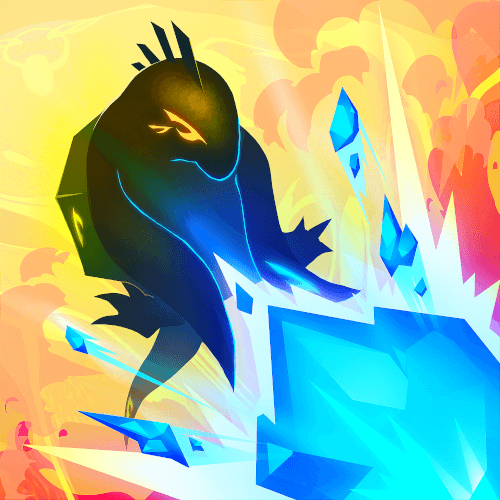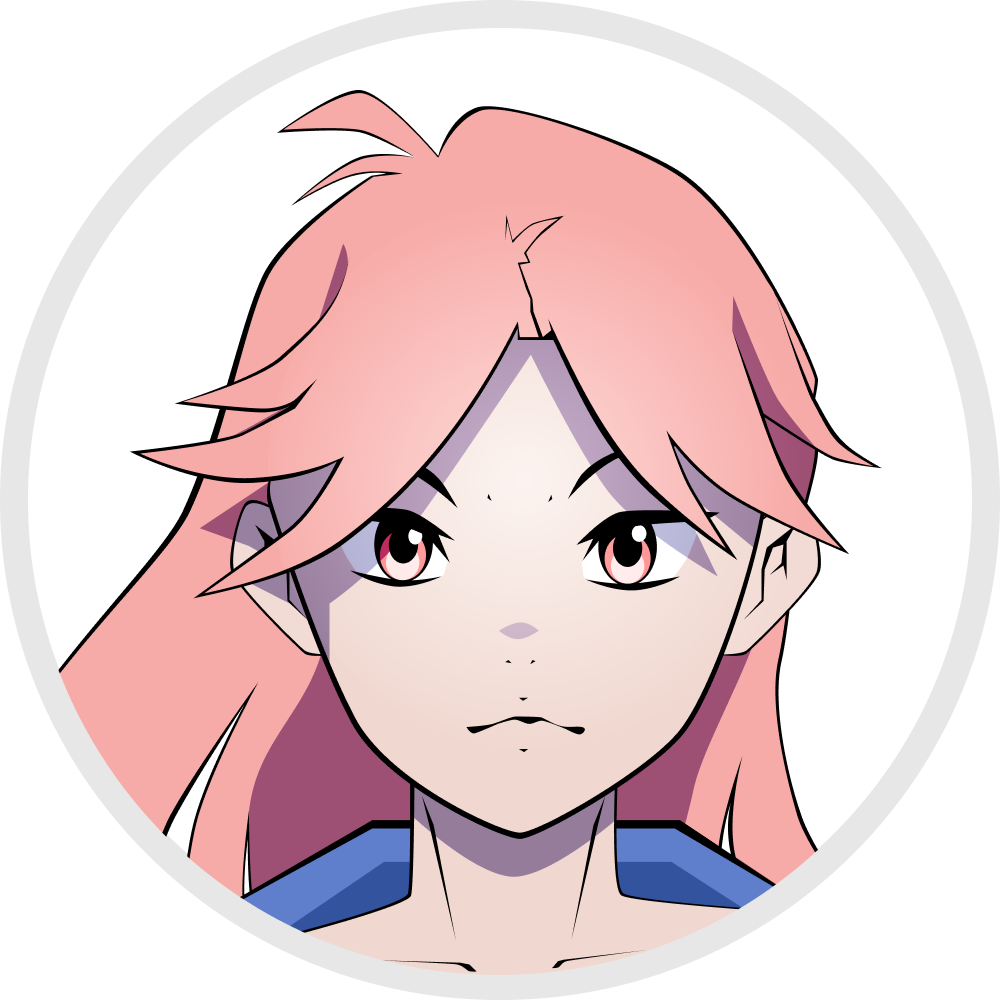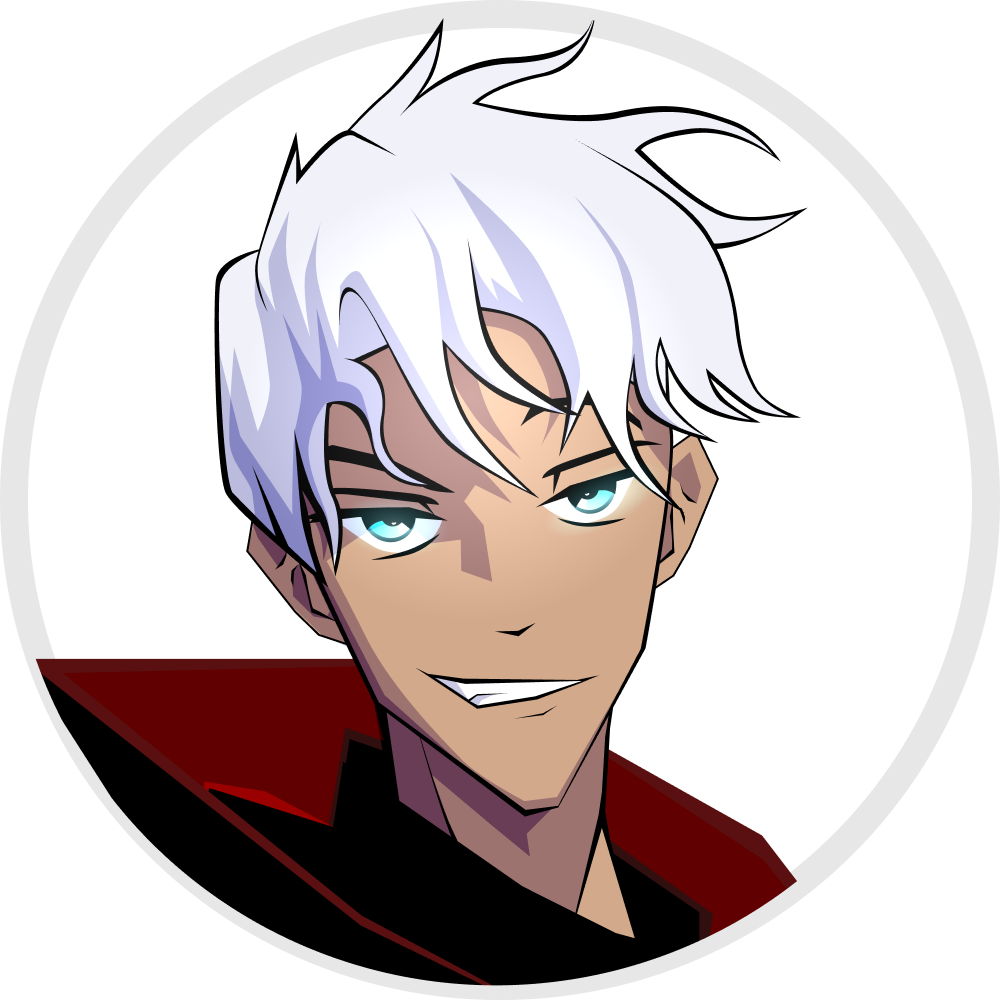
Void Matter Mechanics
What is Void Matter?
Void Matter is the Void's most essential magical substrate.
The source of all magic and material in the Void.
It's also the Void's currency. We abbreviate it as "VM" for short.
Three Principles of Void Matter (VM)
- 1. VM is neither created nor destroyed, but can be transferred between forms.
- 2. VM can change form when acted upon by the lucidity of a sentient being.
- 3. VM is the primary constituent of the Void’s reality.
Why use VM as currency?
Void Matter (VM) is the only known substance that satisfies all three requirements of a stable currency: scarcity, divisibility, and intrinsic utility.
- 1. It can’t be created or destroyed. Meaning no one can truly counterfeit it. Every unit of Void Matter in circulation must have been harvested from existing sources—usually from the remains or emissions of creatures such as Voidpets or Nightmares. This makes VM immune to inflationary creation and grounds it in real, measurable supply.
- 2. It is measurable and divisible. Void Matter naturally quantizes into discrete, stable units, allowing exact valuation and transfer. Advanced Lucidity users can weigh and verify these units without ambiguity, much like how early societies weighed gold or how modern networks validate digital tokens. Its properties make it functionally similar to both ancient currency and contemporary cryptographic assets.
- 3. It represents real productive capacity. VM is literal fuel for creation. Entities with higher Lucidity use it to build, sustain, or weaponize. Owning VM, therefore, equates to owning potential energy and creative capital—a right to shape the Void itself. Holding it is equivalent to owning the means of production in metaphysical form.
- 4. It requires labor to acquire. Extracting or refining VM from corrupted ecosystems or defeated entities is dangerous, specialized work. This “mining” process mirrors both material resource extraction and spiritual purification, reinforcing its role as earned capital rather than arbitrary wealth. VM holds value not just because it exists—but because it costs something to claim.
VM exists in 3 natural states
- 1. Refined Form (Solid Crystalline)
Condensed VM, purified and crystallized into luminous blue shards. The standard medium of trade and storage.
→ Think: physical gold bar. - 2. Internalized Form (Absorbed energy)
VM absorbed into a being’s aura or body. Enables real-time manipulation, fueling combat techniques, or constructs. Fully responsive to its host’s Lucidity, but unstable if over-accumulated beyond one’s natural capacity.
→ Think: capital actively invested. - 3. Crude Form (Residue or crafted object)
Unrefined VM drifting in the atmosphere or crafted into existing structures. Usually a byproduct of battle, creation, or death, and difficult to harness directly. Can only be reclaimed or reshaped by its original creator or someone of greater Lucidity.
→ Think: un-mined ore.
VM was designed to exaggerate the emotions of modern society.
The hunger of scarcity. The way need sharpens desire until survival feels like purpose.
The responsibility of power. The weight of having enough to shape reality, knowing every action ripples through others.
In this world, both longing and control are forms of the same gravity.
Power measures
The three power measures of VM proficiency
- Lucidity
The throughput of Void Matter — how much raw VM you can convert into thought at once. A visible, exponential measure of power output. In the Void, many use the term “Lucidity” as an umbrella measure of strength. - Capacity
Ability to store Void Matter in one’s own aura or body. A quieter metric that’s often overlooked. (If Lucidity is like a computer’s RAM, then Capacity is storage.) - Efficiency
The rate at which Void Matter is lost or conserved when performing actions. Another deceptive measure that characters rarely mention.
These can be trained.
In the Void, Characters openly talk about improving their Lucidity. It’s all about their relationship with Void Matter, which can strengthen over time, just like career or achievement. Think Level or EXP.
It's an exponential curve measured by powers of 10, which means that each level is 10x more powerful than the last. Level 2 Lucidity means you can control over 100 VM, whereas Level 7 means you can control over 1M VM.
Why? Because real life power scales exponentially as well. As you level up, the scope of your thinking completely changes. The system isn't designed for fairness, it's designed for potent narratives around the extremes.
Power measures in action
The slideshow at the top of the page contains a proper Venn diagram of Lucidity, Capacity, and Efficiency. For the blog version, here are some simple examples that show where each character tends to land.

Saves up VM from her job. Big reserves let her blast fire and undergo a powerful transformation.

Pulls off short bursts of speed with tiny VM amounts, but can’t carry enough for destructive attacks.

Strong attacker, but runs out of steam quickly and struggles to build reserves.

Learns to diffuse VM into mist so a little goes further. Survival and support focused.

Unable to intentionally manipulate VM.

Diamond bullets: huge damage with very little VM. Hoards VM rather than carrying it.

Close-range assassin. Carries a lot of VM and spends it wisely.

Hits absurdly hard with large range and high volume. But burns through VM fast.

Well-rounded fighter & businesswoman. Stable, precise, and sustainable.
The Five Elements
I grew up hearing about the five Wuxing (五行) elements from my parents, who were born in China. They talked about them in poetic ways, as reflections of personality, relationships, and mindset. A special meaning behind my name, Linda (aside from it being the name of my mom’s favorite American supermodel) is that I lack wood in my birth chart. In Chinese, “Lin” (林) means forest. A word that would round out my energy with flexibility and vitality.
This system stuck with me, and became a cornerstone of how I designed my worldbuilding. Inspired by Chinese Wuxing elements, the five elemental energies of Void Matter are: Wood, Fire, Earth, Metal, and Water. Each Wuxing element represents a method of shaping Void Matter. A style of transformation influenced by mindset, rather than a literal substance.
In the Void, elements aren’t defined by what they are materially, but by how they act and move.
Instead of being genetically passed down or innate, each character inherits their elements from their Voidpets. The emotions they choose to acknowledge and integrate into their identity.
Five phases of creation
The elements represent the five mental states of any endeavor.
- 1. Wood is Expansion. The moment of reaching outward. Expansion is the spark of curiosity.
- 2. Fire is Activation. The leap from idea to momentum. Activation is commitment.
- 3. Earth is Presence. The grounding phase — consolidating what’s been built and defining its meaning.
- 4. Metal is Refinement. The moment of sharpening and defining the boundaries of a concept.
- 5. Water is Reflection. The introspective close of the cycle. Reflection absorbs, adapts, and learns from what has been done.
The elements work differently for each person, and privilege different combinations of innate and trained stats.
The elements in action
Wood
In the natural world, wood is organic matter. A product of growth, structure, and stored potential energy. Wood governs growth, acceleration, and regeneration. Wood types direct energy into motion. Propulsion, swarm tactics, or organic structures that multiply themselves. They win through pressure and rhythm.

Thanks to her Anxious, Hyphen is brimming with stored energy that leaks out in bursts of speed. For her, wood type energy manifests quietly in brief spells of supernatural speed. Since this keeps a lot of the energy contained in her body, it lends her higher Efficiency overall.

Volo’s hidden wood typing from his lesser known pet, Curious, is what allows him to modify his body so effectively with high Efficency. As a gifted physical fighter, he transforms his matter into sharp spines, stingers, and claws. These have strong synergy with his metal type pet, Lust, and appear as though Lust itself has fused with him.
Fire
In nature, fire is a region of hot gases and free radicals emitting light and heat. A combustion reaction. Not all fire element techniques will cause a combustion reaction into actual flame. In the Void, fire governs excitation and transformation. Fire types manipulate temperature, energy, and volatility. They specialize in burst effects and catalytic impact.

Tilde inherits her fire from Anger. Her high Intensity allows her to heat up pink Void Matter in gaseous form, where it combusts into real flames at the autoignition threshold of 1400° C. Her punches are hot and fierce, but not necessarily destructive.

Promise inherits his fire from Greed. He also heats up red matter in liquid or gaseous form, but due to lower Intensity, typically does not have it combust until contact. That’s why his “fire” techniques resemble red liquid more than actual fire.
Earth
In science, earth refers to soil and rock. A mixture of minerals, organic matter, gases, and liquids that make up the planet’s crust. It’s not a single element, but a composite medium formed through weathering, sedimentation, and decay. In the Void, earth governs density, mass, and permanence. Earth types condense Void Matter into solid, high-mass constructs. Barriers, weapons, or projectiles of incredible weight. They build power with confidence and purpose.

Pecunia's Voidpet is the Earth type, Sloth, and it shows in her fighting style. With incredible Clarity on her side, she'd rather spend an hour growing one flawless diamond bullet than waste a second swinging blindly. Since Pecunia's diamond constructs are covalently bound, not sustained by live current, they don't decay when she stops concentrating. She's able to build her inventory ahead of time and carry it into battle.
Metal
Unlike earth, metal is a pure class of elements or alloys characterized by metallic bonding. Atoms arranged in crystalline lattices that allow electrons to move freely. In the Void, metal governs shape, order, and containment. Metal types distill Void Matter into defined constructs. Armor, weapons, blades. They’re builders, organizers, and cutters. Every motion has an edge.

Char moves his VM like volatile, liquid metal. Think Mercury or Gallium. He’s a novice, but versatile. You'll see him channel metal in a shower of shrapnel, or in the form of gnarly iron claws.

Pandora guides her VM into orderly, engineered systems. Her advanced technique involves constructing conductive crystalline alloys before her eyes, which allow her to amplify and channel heated VM into laser beams.

Volo’s sharpens his VM into cutting edges of steel. His element manifests as scalpels, syringes, blades, and stingers.
Water
In nature, H₂O is a compound, polar molecule, that’s cohesive, adhesive, and incredibly reactive. It moves easily between states with minimal energy change, and is one of the rare substances that exists naturally as a liquid. Its polarity lets it dissolve and transport more substances than any other known liquid. In the Void, water governs adaptability, continuity, and momentum. Water types manipulate matter in fluid states bending density, direction, and inertia to their will. They’re artists, thinkers, and visionaries.

His Water energy manifests in soft, simple forms. Gentle streams that hold brushes like appendages, drifting mist that perfumes the room, and small acts of warmth like brewing tea for his friends. Where others weaponize Water, he uses it in everyday life. To create, to comfort, and to survive.

Promise's lesser-known but more advanced water typing manifests as ice. Or rather, thin streams of cryogenic wires that slice with thermal shock and momentum. His control over phase change also enables his unique teleportation skill: Transforming himself into vapor and back. He doesn’t fit the mold of a typical water type.
Hidden Talents
Every Voidpet has hidden stats, and so do their human partners who inherit them.
Practical history
You might recognize these if you've played Voidpet Garden. Most don't really know how they work - though it's not something we've ever really tried to explain. Think Pokemon's individual values system.
The origin of the hidden stats
- 1. Clarity clarity determined the number of layers in each Voidpet's unique wave design in Voidpet Garden. Higher clarity meant fewer layers.
- 2. Stability determined the randomness of the waveforms. Each crest and trough would be programatically offset to the left or right to create a more natural, organic look. Higher stability meant less offset.
- 3. Intensity determined the bumpiness of the waves. Higher intensity meant higher peaks and lower valleys.
They also controlled speed, defense, and attack respectively. The idea here was that you could look at the shape of the wave and immediately get a good sense of a Voidpet's stats. The "strongest" Voidpets would have only one wave layer with tall, even-keeled peaks and valleys. Meanwhile, the weakest (but often most beautiful) Voidpets would have many little erratic waves like ripples on a lake.
In the story, these same stats have a slightly different impact on each character's talents.
The Three Hidden Stats in worldbuilding
- 1. Clarity correlates to intelligence, speed, and resourcefulness. Affects the precision of void matter crafting. Think sharp or tiny objects.
- 2. Stability correlates to composure, thoughtfulness, modesty. Affects the fidelity and consistency of Void Matter crafting, particularly organic and dense materials.
- 3. Intensity correlates to ambition, energy, charisma. Affects temperature extremity, attack volume, and entropy.
These rarely change, and are typically thought of as innate personality traits.
Talents in action

Saves up VM from her job. Big reserves let her blast fire and undergo a powerful transformation.

A versatile fighter with a diverse moveset. Can construct anything from metal projectiles to iron claws.

Fast and agile with a keen eye for detail. Moves quickly and precisely, but struggles to deal damage.

Can sustain gentle constructs for extended periods of time. Prefers to use his powers for creation and helping others.

Can barely manipulate VM at all. Leaks VM in the form of green goo.

Prefers physical modifications over projectiles and external constructs. Can create sharp blades and durable appendages on his own person.

Constructs diamond bullets with incredible precision and clarity. Prefers calcuated stealth attacks over direct confrontations.

Relies on raw Lucidity over hidden talent advantages. Due to poor stability, he typically only crafts small, disposable objects.

An advanced, versatile warrior. Uses lasers, gauntlets, and steel defenses for a well-rounded fighting style. Can construct massive, durable, steel constructs.
Case studies
Now that I've covered all of the basic mechanics, let's take a deep dive comparing and contrasting different characters side by side to really see how these rules play out in practice!
Lucidity
Take Tilde and Promise. Both fire types with high intensity.

Tilde’s Lucidity limits the amount of fire she can use in battle. Her fire burns hotter that most—but she can’t control large amounts at once. That’s why her attacks involve hurling smaller fireballs, throwing punches, or breathing flames in short bursts. However, she is the more Efficient fighter.

On the other hand,Promise’s more advanced Lucidity allows him to manipulate a higher volume of fire at the same extreme heat as Tilde’s. His higher Capacity also allows him to store more VM at once and unleash a larger mass. It’s a difference of experience and access to resources.
Capacity
Now let's compare Char and Tilde. They are similar in skill level, but have different advantages.

Char’s Lucidity is more advanced than his peers in the freshman friend group. He can command a good amount of VM at once, but his most frustrating bottleneck is capacity. He quickly runs out of juice and needs to refuel. (This is why he steals slushes from his job.)

Her more advanced Capacity is what Char envies most. High capacity allows her to transform her legs into a ghost tail and fly. Despite lacking technical variance, she’s capable of saving up more VM on her person, and has more stamina in battle.
Efficiency
Promise and Volo make a great comparison for Efficiency. Both are advanced fighters, but have different approaches.

Promise’s poor Efficiency is related to his other traits: fire & water typing, high Intensity, and also high Lucidity. His signature techniques are designed to burn and expend VM, not save it. Since he naturally prefers to focus on the size and intensity of his moves, his Efficiency skill gets neglected.

His extremely advanced Efficiency is related by his dual wood & metal type. Also correlated with high Stability & Capacity. Wood lends itself well to physical modifications. Metal keeps well in sharp, deadly forms. As a result, he’s gotten to perfect strong techniques that barely consume any VM.
Intensity
Hyphen and Tilde are peers in skill level, but their natural talents create a much larger delta in battle.

Her low Intensity makes her less inclined to use moves that involve extreme aggression or firepower. Especially as a wood type, it’s more difficult to cause harm without precise control over large amounts of void matter. That’s why, as a beginner, she tends to focus on escaping to safety..

Her high Intensity allows her to excel in combat despite an overall beginner level. Fire is a powerful element even in small, uncontrolled doses. As long as it’s hot enough to burn, it can deal plenty of damage. Compared to her friends, she’s able to face stronger foes despite having a similar level of VM proficiency.
Stability
At this point, I think my examples are starting to get repetitive, and perhaps the system is becoming clear enough for you to intuit the answers yourselves.

Promise’s fire and water are elements with inherently lower Stability on average. When making solid items, he tends to craft VM into small, disposable items like coffee or accessories. However, his specialty lies in ephemeral forms and big, liquid attacks.

Pandora is a classic metal type. Her elite Stability allows her to craft Void Matter into massive steel beams that hold up over time. (That’s why he begs her to help him build a skyscraper.) It’s also why Pandora can create laser beams and Promise can’t.
Clarity
Due to their natural personality differences, Alt and Pecunia are total opposites when it comes to how they push the bounds of their respective elements.

Alt has low Clarity. While some Water types (like Promise) use their Clarity to make ice, Alt goes the opposite route and eventually learns to create mist. His moves aren’t sharp, but they’re atmospheric, beautiful, and hard to contain.

Pecunia’s extreme Clarity lets her compress her Earth element into perfect crystalline forms. Her power manifests as sparkling, precision weapons: Diamond bullets and knives. While Alt’s moves have wide coverage, hers have lethal accuracy and precision.
Elemental influences
Each character's elemental combinations also set the stage for interesting techniques and strategies.

Tilde is a pure Fire type. She draws all her influence from her starter, Anger. Her raw intensity is so high, her pink matter skyrockets to a high temperature and quickly combusts into flame. Tilde’s fire burns clean and hits hard, but rarely burns for long, and causes little collateral damage. How come?

Promise’s dual typing in Water & Fire gives him a unique way to fuel his Fire. Drawing mixed influence from his Earth father and sister, he adds liquid petroleum to his moves. His VM is actually a lower temperature, and stays as red plasma, typically not combusting until contact. However, its high volume and use of a fuel source make it more toxic, persistent, and destructive.
Talent vs. Skill
Finally, we'll look at Char and Pandora as examples of how hidden talent differs from trained skill. These are both versatile characters, but are capable of different techniques due to their experience levels.

Char is balanced at all three hidden talents. His versatile move set is evidence: Alloy burst: a heated blast of metal shards, powered by intensity. Wrecking ball: a spiky metal orb, with spikes made possible by high clarity. Iron claw: a hand transformation into a big rugged claw, requiring high stability to hold its form.

Pandora also naturally balanced. The difference is, she’s also well rounded in all three trained power measures. She shows the same versatility with advanced moves. Laser precision: sustained narrow shape and high heat requires all three talents. Nerves of steel: a skeletal transformation to steel, requiring extreme stability. Steamroll: neat iron gauntlets require clarity & stability to hold their shape.
How does this relate to the Voidpets?
The goal of this system is to add narrative depth and build upon the fundamental building blocks established by the Voidpets. Since Voidpets are the purest sources of Void Matter, they’re what make it possible for their human partners to mix, adapt, and discover new ways to express power.
In our games, Voidpets are intentionally simple, accessible, and open to player interpretation. They’re meant to grow alongside you, reflecting your choices and imagination rather than dictating them.
But in the book and animation, the goal shifts. These are meant to feel rich, and explore how those same foundations can evolve into full characters, relationships, and stories.
These deeper systems celebrate the game's simplicity, showing how those core ideas can branch into infinite worlds.